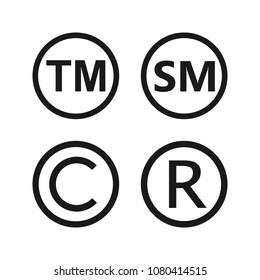A trademark registration hong kong https://www.accoladeip.com/us/en/trademark-search/ is a type of intellectual property that enables companies to identify their goods or services. They can take many forms, including words, slogans, logos, shapes, colours and sounds. Trademarks are also used as a form of advertising. This makes it important for business owners to keep their mark properly registered and to react quickly when it is being used incorrectly or without their permission.
Trademarks are a form of intellectual property
Trademarks are a type of intellectual property, which is defined as a set of intangible assets that are legally protected by a company or individual from outside use or implementation without consent. They include copyrights, patents and trademarks.
A trademark is a word, phrase, symbol or design that identifies and distinguishes a product or service from other goods and services. It can help protect a business from competitors who might mislead consumers into thinking they are buying the right products.
Another type of intellectual property is a patent, which grants rights to an inventor based on their invention or new product. It lasts for a limited period of time (currently 20 years) and gives the owner the right to sue an infringer who has used their invention.
Copyrights and patents are two of the most common types of intellectual property. Both grant protection for original creative works and inventions, though each has its own set of rules and registration requirements.
They make it easier for consumers to identify the source of a given good
trademark registration hong kong are a form of intellectual property that protect recognizable signs, designs, and expressions. These can include words, slogans, logos, shapes, colors and sounds.
One of the benefits of trademarks is that they make it easier for consumers to identify the source of a given good. For example, if a consumer wants to know where to get a can of Coca-Cola, they can simply look for the logo and be sure to purchase from the right company.
In addition, they give manufacturers an incentive to invest in the quality of their goods. For example, if a consumer tries a can of Coca-Cola and finds the quality is not up to par, they will likely stop buying the product and choose another brand instead. This will help prevent the company from losing business in the future.
They give manufacturers an incentive to invest in the quality of their goods
Trademarks make it easier for consumers to identify the source of a given good, giving manufacturers an incentive to invest in the quality of their goods. For instance, if a consumer buys a pair of Nike shoes with a distinctive swoosh design, the manufacturer might want to put more effort into making them last longer than their generic counterparts.
However, trademarks also carry a certain level of risk, particularly when they are used to market generic products. This has led to the evolution of a newer, more complex set of intellectual property laws designed to keep producers in business while protecting their interests. Historically, the most prominent feature of trademark law was its ability to protect producers from illegitimate attempts to divert their trade. This focus shifted in the twentieth century as producers began to diversify their product offerings and expand beyond their traditional local markets. In the end, this innovation owes its existence to a particular court decision in England that rejected a particular property theory and countenanced a much broader range of producer interest.
They are a form of advertising
Trademarks are a form of advertising that helps consumers identify the source of a given good. They can be words, letters, numerals, devices, names, the shape or presentation of products and their packages, colour combinations with signs, etc. They help distinguish goods from other products and are a key part of brand marketing.
However, this ability to distinguish the origin of a product from other products is not the only function of a trademark. Trademarks also perform the quality function, which guarantees that the goods or services are of high quality, and the communication function, which conveys the trademark image through advertising. Scholars and courts largely agree that these functions are essential to the purpose of the trademark, which is to distinguish goods from other goods. However, they can become problematic for advertisers if they are used to mislead consumers into believing that there is some affiliation or sponsorship between the product and the trademark.
Here’s more on Accoladeip, take a look at our own internet site.





